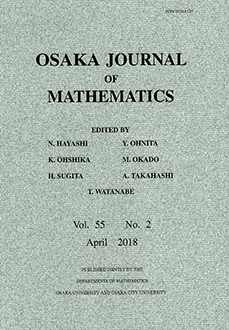Abstract
We develop the twistor theory of $G$-structures for which the (linear) Lie algebra of the structure group contains an involution, instead of a complex structure. The twistor space $Z$ of such a $G$-structure is endowed with a field of involutions $\mathcal{J}\in \Gamma (\End TZ)$ and a $\mathcal{J}$-invariant distribution $\mathcal{H}_{Z}$. We study the conditions for the integrability of $\mathcal{J}$ and for the (para-)holomorphicity of $\mathcal{H}_{Z}$. Then we apply this theory to para-quaternionic Kähler manifolds of non-zero scalar curvature, which admit two natural twistor spaces $(Z^{\epsilon},\mathcal{J},\mathcal{H}_{Z})$, $\epsilon=\pm 1$, such that $\mathcal{J}^{2}=\epsilon \Id$. We prove that in both cases $\mathcal{J}$ is integrable (recovering results of Blair, Davidov and Mu\u{s}karov) and that $\mathcal{H}_{Z}$ defines a holomorphic ($\epsilon=-1$) or para-holomorphic ($\epsilon=+1$) contact structure. Furthermore, we determine all the solutions of the Einstein equation for the canonical one-parameter family of pseudo-Riemannian metrics on $Z^{\epsilon}$. In particular, we find that there is a unique Kähler-Einstein ($\epsilon=-1$) or para-Kähler-Einstein ($\epsilon=+1$) metric. Finally, we prove that any Kähler or para-Kähler submanifold of a para-quaternionic Kähler manifold is minimal and describe all such submanifolds in terms of complex ($\epsilon=-1$), respectively, para-complex ($\epsilon=+1$) submanifolds of $Z^{\epsilon}$ tangent to the contact distribution.
Citation
Dmitri Alekseevsky. Vicente Cortés. "The twistor spaces of a para-quaternionic Kähler manifold." Osaka J. Math. 45 (1) 215 - 251, March 2008.
Information





